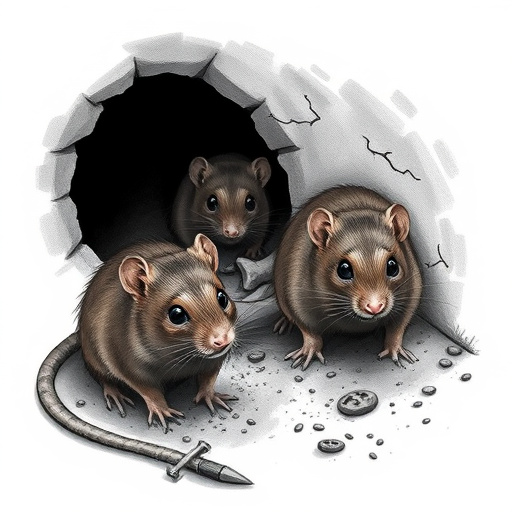Seasonal Rodent Activity: Effective Control Strategies for Tucson Homes
Rodents like mice, rats, desert deer mice, and wood rats thrive in Tucson's Catalina Foothills…….

Rodents like mice, rats, desert deer mice, and wood rats thrive in Tucson's Catalina Foothills ecosystem, entering homes through small openings. House mice dominate due to rapid reproduction. Effective rodent control involves sealing entry points, maintaining cleanliness, regular inspections, using scent repellents or non-toxic traps, and professional assistance when necessary, especially for year-round wood rat problems. These proactive measures are crucial for seasonal rodent management in Tucson's urban and suburban areas.
Explore the dynamic relationship between seasonal rodent activity and Catalina Foothills homes in this comprehensive guide. Understanding the behavior of these creatures is key to implementing effective rodent control strategies in Tucson’s unique ecosystem. From identifying common species like the deer mouse and pack rat to mastering seasonal trends, residents can proactively protect their homes and neighborhoods. Discover proven methods tailored to the Catalina Foothills environment, ensuring a harmonious coexistence with these furry visitors while minimizing potential damage. Learn how to tackle rodent control in Tucson effectively.
- Understanding Rodent Behavior in the Catalina Foothills Ecosystem
- Common Rodent Species Found in Tucson Homes and Neighborhoods
- Effective Seasonal Rodent Control Strategies for Catalina Foothills Residents
Understanding Rodent Behavior in the Catalina Foothills Ecosystem

Rodents, such as mice and rats, are integral parts of the Catalina Foothills ecosystem, though their presence can be a nuisance for homeowners. Understanding their behavior is key to effective rodent control Tucson residents often seek. These creatures are highly adaptable, especially in urban environments like the Foothills, where they’ve learned to thrive near human settlements. Activity patterns vary by species and season, with some preferring warmer months when food is abundant.
In the Catalina Foothills, rodents are most active during twilight and night hours, taking advantage of the reduced human activity and easier access to food sources. They nest in attics, walls, and other secluded areas, often entering homes through small openings or gaps. Their behavior can be unpredictable, making it crucial for residents to employ proactive rodent control measures. Proper sealing of entry points, regular cleanliness, and professional assistance when needed are essential strategies for managing and preventing rodent infestations in these scenic neighborhoods.
Common Rodent Species Found in Tucson Homes and Neighborhoods

In the vibrant landscape of Tucson’s Catalina Foothills, several rodent species have made homes in both urban and suburban environments. The most common include the house mouse, desert deer mouse, and the Arizona wood rat. These rodents are adept at finding their way into homes and neighborhoods through tiny crevices and openings, often seeking shelter and food resources.
House mice, known for their quick reproduction rates, are particularly prevalent in areas with abundant human habitation. Desert deer mice, though typically more nocturnal and elusive, can be drawn to residential areas during the colder months when they seek warmer environments. The Arizona wood rat, a larger species, often inhabits attics and wall voids, causing potential damage while seeking refuge from predators and harsh weather conditions, highlighting the need for effective rodent control Tucson residents might require throughout the year.
Effective Seasonal Rodent Control Strategies for Catalina Foothills Residents

In the Catalina Foothills, seasonal rodent activity requires tailored strategies for effective rodent control. As these creatures seek shelter and food sources during changing weather patterns, Tucson residents can implement proactive measures to prevent and manage infestations. One key strategy involves sealing entry points into homes and structures, addressing any gaps or cracks that might serve as access points for rodents. Regular inspections, especially before and after seasons of heightened activity, are crucial in identifying and mitigating potential entry points.
Additionally, maintaining a clean and clutter-free environment is vital. Rodents are attracted to areas with readily available food sources, so proper garbage disposal, pet food storage, and regular yard maintenance can significantly deter their presence. Using scent repellents and non-toxic traps specific to the Catalina Foothills ecosystem can also be effective. These strategies, combined with professional rodent control services tailored for Tucson’s unique conditions, ensure residents are prepared to manage and prevent seasonal rodent activity effectively.
The diverse ecosystem of the Catalina Foothills presents unique challenges when it comes to seasonal rodent activity. Understanding these patterns and identifying common rodent species is crucial for effective rodent control in Tucson homes and neighborhoods. By implementing tailored strategies throughout the year, residents can significantly minimize rodent infiltration, ensuring a more comfortable and secure living environment. When it comes to rodent control Tucson, proactive measures and knowledge of local behavior are key to keeping these unwelcome visitors at bay.







